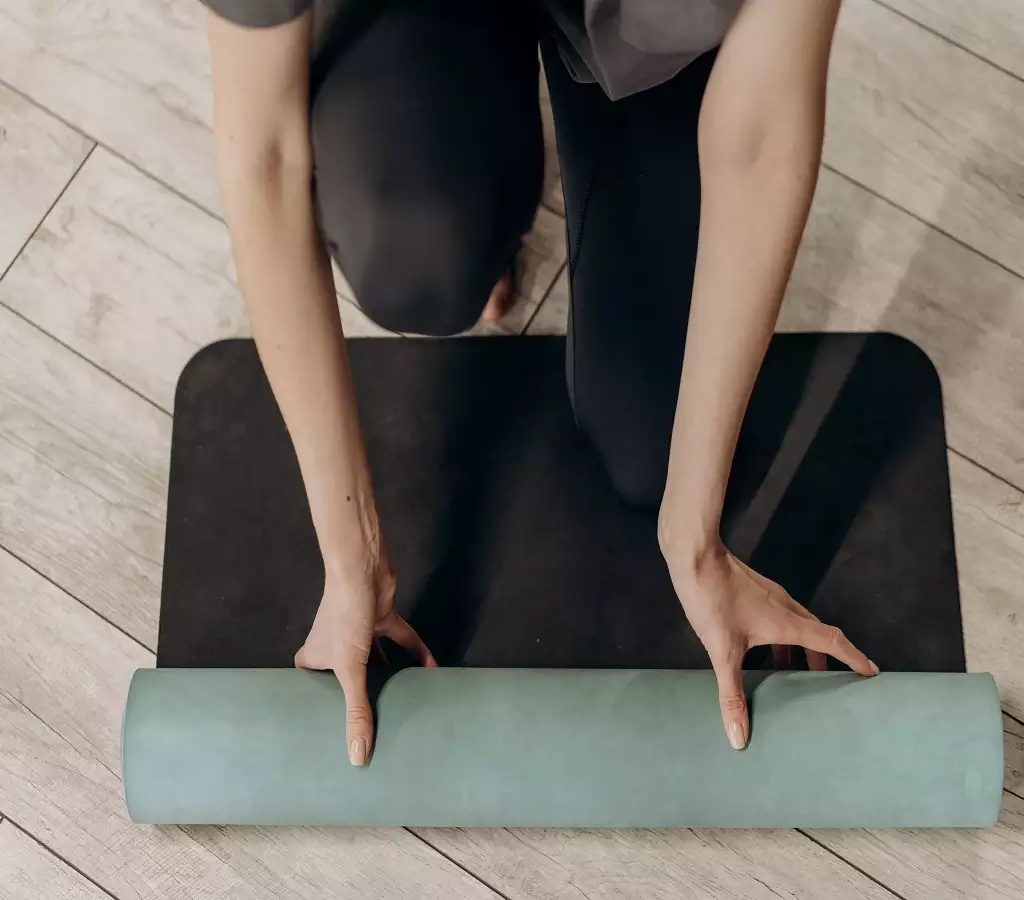Despite the fact that yoga has achieved great popularity all over the world, there are numerous preconceived ideas, misconceptions, and yoga myths. This post aims to uncover these yoga myths and share the beauty, simplicity and effectiveness of yoga for modern societies’ wellness.
Originating from the Sanskrit word “Yuj”, Yoga means a union of an individual’s mind, body & spirit with the environment. This ancient Indian practice of yoga, which is about 5000 old, is frequently seen as just a physical workout of bending, extending, contorting, and turning. However, it is far more than that, as it unlocks the boundless possibilities of the merger of body, mind, and soul.
If you are fresh to yoga or uncertain about trying it out, then explore these yoga myths. And see if they are keeping you from finding your spot on the mat. Now, let’s dispel some of these myths, shall we?
Myth 1: You’re not flexible enough to do yoga.
Saying you are too inflexible to do yoga is the same as saying you are too ill to visit the physician. Inflexibility leads to a variety of aches and pains.
We are not claiming that it will be straightforward. But we can assure you that having a decent range of motion throughout the body will reduce your pains now and in the future. Just keep your sense of humor close.

Myth 2: You Need Fancy Clothing and Mat to Practice Yoga
Yoga has become a global phenomenon. Companies now are dedicated to creating and selling dedicated clothing, mats, bags and sweat towels for practitioners.
However, it should be noted that none of these items are necessary to practice yoga. The original yogis performed their practice in the wild wearing nothing but loincloths, proving that very little is needed to practice, and it is important to remember that yoga is an internal pursuit, attempting to take your awareness within.
While the acquisition of flashy new mats and stylish clothes may be desirable, they are only on the material level and not essential to the practice. Yoga can be done in whatever makes one comfortable, using as little as a few feet of open space. Here we go, one more from the list of yoga myths is smashed.

Myth 3: Yoga is not a workout
It is one of the most spread yoga myths. Yoga was designed to wear out body and mind so that they would be able to focus on meditation.
These modified stretching activities that some people refer to as yoga are not the ultimate form, they are a representation of a style that somebody developed and a lot of people followed. It is natural for things to change, and there are numerous different styles that can be united in the all-encompassing term of yoga.

Myth 4: Yoga is just a series of stretches and balances
Strectching can heat up your muscles before any physical activity, assists with recuperation after an exercise routine, and helps keep up useful development in later life, yet the advantages of yoga go much more distant. A study distributed in the International Journal of Yoga says that it fortifies heart and lung capacity, lessens tension and gloom, and can even help with dealing with dependence.
It gives you a chance to create interoception, which is about how your body feels inside. Yoga sets you up with the necessities of your body and psyche. It additionally helps cultivate mindful and cherishing mindfulness, which brings about knowing ourselves better – and when we know ourselves better, we react shrewdly to what our framework needs.

Myth 5: Doing more advanced poses means you’re better at yoga
One of the many yoga myths is that being physically capable is all that is needed for a person to be an excellent student. This misconception can be intimidating when we watch others do advanced poses, like the headstand and crow’s pose.

Myth 6: Yoga means Hindu-Religion
A lot of people have the wrong idea about yoga. It isn’t about religion. It’s about having a healthy lifestyle, using a scientific approach to live life to the fullest without any ties to religious beliefs or converting to a different faith.

Myth 7: Want to try Yoga? Learn Sanskrit
Yoga has been a part of India for many generations. It came about during the time of civilization there. Lots of experts have looked into it and shared their knowledge with the rest of the world.
Since Sanskrit was the main language of India in the olden days, most of the work on Yoga is written in it. The ideas of Yoga have been translated into various languages so they can be understood by people from all over.
You can find books, videos, and courses on different aspects of Yoga in more than a dozen languages. Additionally, there are plenty of websites with material about Yoga in the language of your preference.

Myth 8: Yoga Is Contraindicated During Pregnancy
Numerous cultures and beliefs have instilled the idea that pregnant women should be handled with extreme care, as if they were fragile glass pieces that would break with the slightest movement.

This is a common misconception, as medical professionals advise pregnant women to participate in regular physical exercise that is safe for both the mother and the unborn baby.
Yoga poses are beneficial at various stages of the pregnancy and meditation is also part of the Indian tradition of Garbha Sanskar, which is used to instill positive values into the mind of the baby.
Nevertheless, it is important to emphasize that pregnant women must not practice Yoga without the guidance of an authorized instructor.
Myth 9: Avoid Yoga During Menses
Numerous wrong beliefs still persist in numerous societies and groups regarding menstruation. One of these is that women should abstain from doing exercise while having their period. Women may feel drained or exhausted during their period, so it is recommended to stay away from a strenuous physical workout.
Nevertheless, a gentle Yoga session won’t hurt. The abdominal and pelvic muscles, which can become sore during menstruation, can be aided by the Yoga poses. Talk to a qualified instructor to learn about the advantages of a beneficial Yoga practice during menstruation. So don’t let such yoga myths make you stay away from something amazing.

Myth 10: You can’t lose weight with yoga
In addition to running and cycling, activities such as yoga can help in losing weight gradually, while enhancing strength, elasticity, and coordination.

Practices in power yoga or hot yoga are created to raise your heart rate, which will lead to perspiring and burning calories. It can also tone and stretch the muscles and limbs, thus improving posture.
Myth 11: You can learn it through books
Many believe that gaining insight into Yoga is as straightforward as consulting the abundance of books available in a store. This, however, is far from the truth.
Performing the poses incorrectly can result in physical damage and an incomplete understanding of the practice. It is a disciplined process that should be learned from a knowledgeable instructor.
There needs to be an accurate comprehension of what is to be done, as well as the possible advantages and drawbacks of certain techniques. Reading books may motivate you, yet the harm that it may cause without the right direction could be irreversible.
Myth 12: Yoga means total lifestyle change
Doing yoga involves making some alterations to how one lives. It does not mean that a person needs to completely transform their lifestyle or give up all of their possessions. Don’t be carried away by such yoga myths.
A diet centered on plant-based foods and limiting the consumption of meat and unhealthy snacks is recommended, but an occasional glass of wine is okay.
To make a true lifestyle change, however, more than just dietary changes need to take place; this includes being helpful to other people, ethical behavior, respecting different religions and people, and meditating regularly.
Myth 13: You Have to Be Young
The media often wrongly paints yoga as a solely young person’s activity, like the myth of the slim yogi. This is not true, however, and can be discouraging for elderly individuals with different body types and abilities.
On the other hand, the over-60 population is now one of the fastest-growing groups of yoga-goers. It is due to the multiple health benefits such as decreasing stress, improving muscle tone, and increasing flexibility.

Myth 14: Yoga takes a lot of time
It’s not necessary to spend a long time focusing on your body, mind, and spirit for the practice of yoga. Unfortunately, this misconception is often perpetuated and leads to apprehension among those who are already hesitant about postures. They then use it as an alibi for their lack of motivation.
However, real yoga does not require you to do it for hours each day. Even if you just dedicate ten minutes to breathing exercises or meditation, it will have a positive effect on your brain and the way you think.
Myth 15: The chanting is mandatory
You don’t necessarily have to chant during a yoga session. Some approaches that tend towards chanting are usually suitable for individuals who find it hard to clear their heads. Taking deep breaths and doing some gentle stretching can improve blood flow. It will also make it easier to relax your mind prior to settling into a pose.
What are the Benefits of doing Yoga?
Many people across the world have benefited from doing yoga asanas every day. Some of the primary gains reported by other yoga enthusiasts are
- improved flexibility,
- greater self-assurance,
- better posture while standing and sitting,
- improved circulation,
- improved self-esteem,
- and greater muscular strength, as well as increased vitality.
Needless to say, yoga is a lifestyle that anyone can follow for a multitude of advantages. Over time, it will make you feel better about yourself and can even help to reduce the chance of depression.
If you have an unforgettable experience to share, please don’t hesitate to leave a comment below. We are looking forward to reading your responses, as we wish to know what yoga means to you.
Hope we have debunked some of the yoga myths you would have in your mind.


